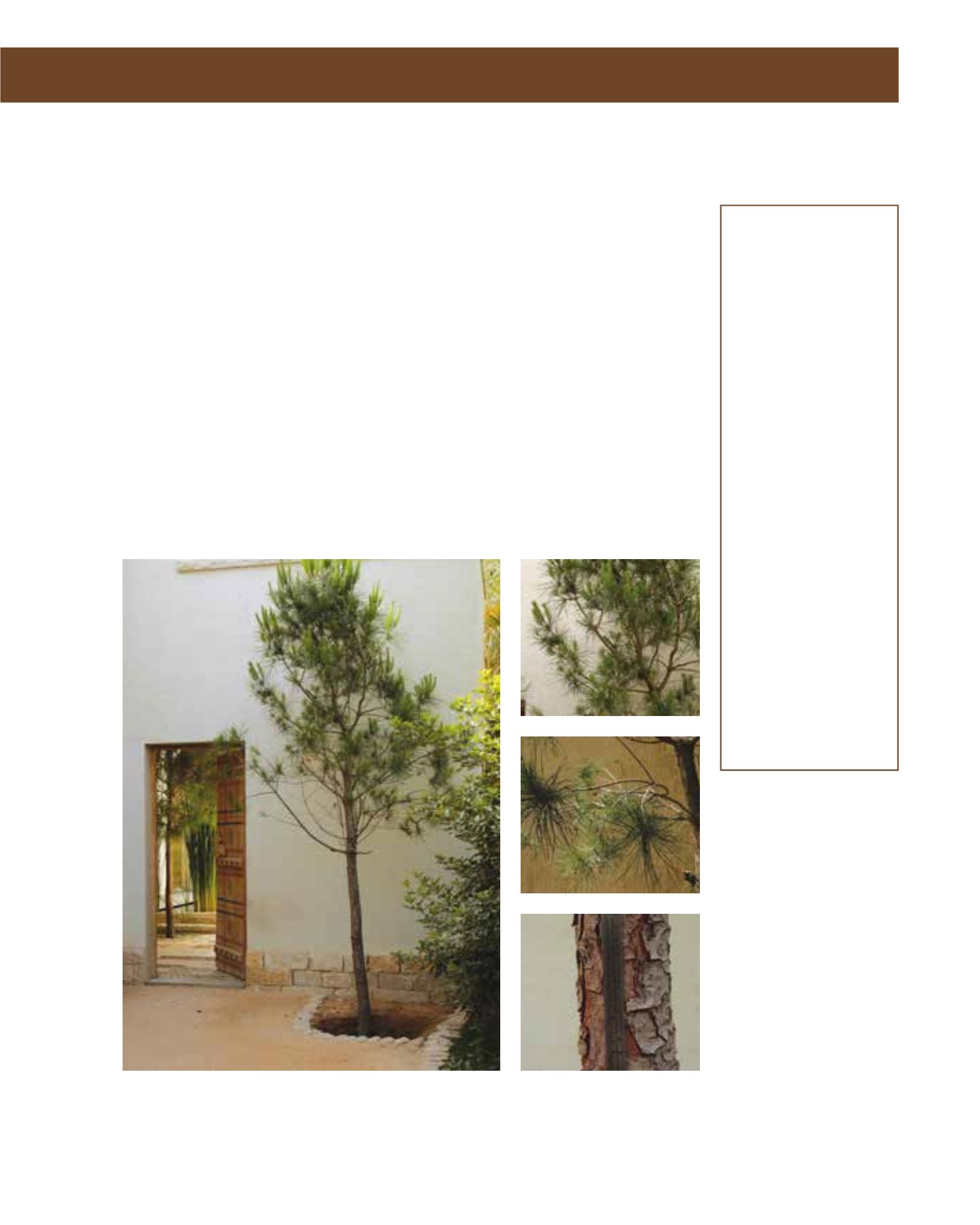

GENERAL
Origin
:
sub-Mediterranean,
Mediterranean,
sub-tropical
Vigour
:
fast growing
Humidity
:
semi-arid, semi-
humid
Propagation :
sowing and
pricking out
Maintenance :
low
CONDITIONS
Urban climate :
vulnerable
Dessication :
vulnerable
Stagnant water :
vulnerable
Irrigation
:
low
Salinity/ppm :
moderate (3000
ppm)
Hardiness
:
-12°C
SHAPE
Type
:
tree
Height
:
10 m-20 m
Spread
:
7 m-15 m
Foliage
:
evergreen
FLOWER
Colour
:
pastel yellow
Size
:
1 cm
Period
:
March - April
Smell
:
scented, aroma,
gives freely of its
scent, leaf, spicy
FRUIT
Type of fruit :
cones
Fruit size
:
10 cm - 15 cm
The Aleppo Pine is native to the Mediterranean region; its range extends into the Middle East.
Pine trees are not generally seen in Arriyadh, because of the high temperatures and alkaline
soils; however, P. halepensis is tolerant of such conditions and is occasionally seen in protected
locations. P. eldarica is another pine which would grow in Arriyadh. An evergreen, moderate- to
fast-growing tree, up to 20 metres high and 6 metres wide and a large trunk of up to 1 metre di-
ameter, its bark is thick, fissured and reddish in colour. When young, its growth is pyramidal; at
maturity, it has an open, irregular, rounded crown with huge lateral branches. The characteristic,
yellowish-green, needle-like leaves are very slender, 10 cm long and produced in pairs. The flowers
are inconspicuous in brown bundles at the end of the branches. The green cones are narrow, oval,
up to 12 cm long and open slowly, ripening to glossy red-brown. P. halepensis is frost-tender when
young, but mature trees withstand severe frosts. It prefers full sun and reflected heat; tolerating
partial shade, when young, it will grow in poor soils, except wet types. Most drought-tolerant in
good soil, it does best with irrigation, 2–3 times per month. Propagation is by seed, and plants
require little feeding. Prone to mites and aphids, maintenance is low; pruning is seldom required
after establishment. Aleppo Pine is used in afforestation in the Middle East. It is a popular orna-
mental tree for planting in large private gardens, and in parks in hot dry areas.
234
Pinus halepensis,
Pinaceae
Aleppo Pine
















